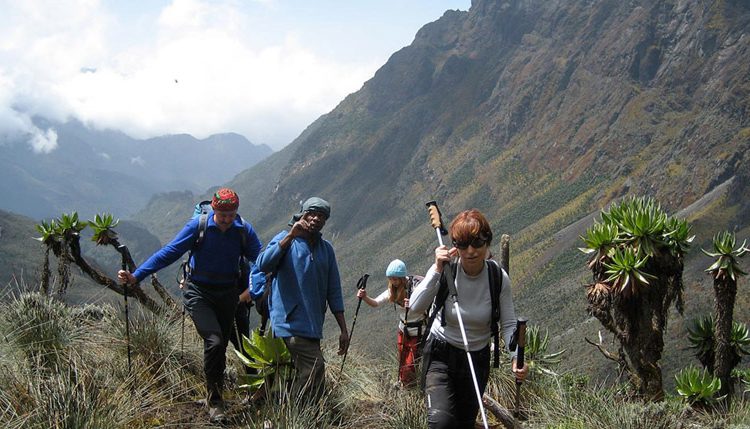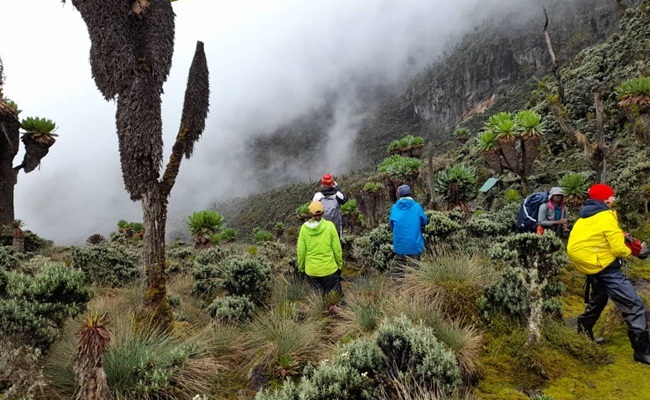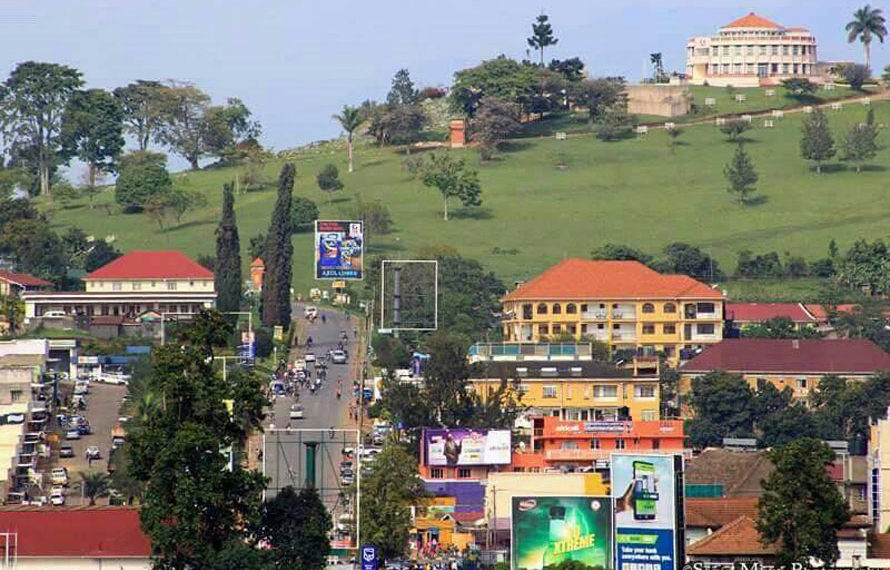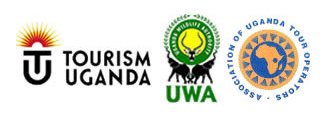
Climbing Mount Rwenzori
Climbing Mount Rwenzori.
Climbing Mount Rwenzori :The third-highest peak in Africa, Mount Rwenzori, is situated in Uganda, bordering the Democratic Republic of the Congo. The Rwenzori ranges are frequently referred to as the “mountains of the moon,” a term that comes from the Greco-Roman mathematician and father of geography and astronomy, Claudius Ptolemy. He dubbed the Rwenzori Mountains the moon because to their remarkable glaciers, which gleam like tiny moons.
A native phrase that means “rain maker” is the source of Mount Rwenzori’s name. The Duke of Abruzzi, an Italian aristocrat, named the first peak Margherita after the Italian monarch. Africa’s tallest mountain range is called the Rwenzori. It was listed as one of the top trekking safari locations worldwide by National Geographic. Even though climbing can be difficult, it’s an exhilarating safari experience that you should try before you die.

Although Mount Rwenzori rose from the floor of a rift valley, it is unlike other African mountains in that it is not volcanic in nature. It is further separated into altitude zones that have distinct microclimates, vegetation, and wildlife.
For those who enjoy watching birds, Mount Rwenzori also has a large number of species, some of which are unique to the region. These include, but are not limited to, fly catcher, greenbul, black eagle, long eared owl, handsome francolin, scarlet tufted machalite sunbird, cinnamon chested bee eater, lammergeyer, Archer’s ground robin, Rwenzori Turaco, and white-starred forest robin.
Nine of Uganda’s great lakes are visible from the slopes of Mount Rwenzori, which is home to a variety of flora and fauna as well as shifting vegetation that changes with each increasing level. In contrast to other hiking safari destinations worldwide, mountain Rwenzori is less congested and provides a genuine sense of hearing the whispering of the wild. The Rwenzori National Park was established in 1991 and occupies 996 square km. With a height of 5109 metres above sea level, the highest peak
Just a small percentage of the over 100,000 mountain climbers that attempt to climb Mount Rwenzori reach the highest Margherita summit. The mountain is split into six mountain groups and is traversed by verdant valleys. The mountain range covered in snow stretches over approximately 120 km.
The two main pathways on Mount Rwenzori are the Kilembe track, which ascends and descends Margherita peak in approximately 9 to 10 days, and the central circuit trail, which takes approximately 7 days to reach Elena Hut and offers breathtaking views of Margherita peak.
Rwenzori Mountains’ tropical forests are home to fig trees around their base. Next come the bamboo and mossy heather zones, followed by the rocky areas that climb to the mountain’s peak. The trip always begins in Nyakalenjija and goes past the Mubuku River to Nyabitita Hut, where hikers can stop and watch blue monkeys and chimpanzees. The Nyamuleju Hut is the next stop. En route, you’ll cross the Kurt Shaffer Bridge and get a view of the stunning Mubuku River, Mount Stanley, and Mount Speke. After that, you’ll climb up to John Matte’s hut to spend the night.

After passing Lake Bujuku and climbing through enormous lobelias and heath trees, you will reach the Cooking Pot Rock Shelter, which is your penultimate resting place, before arriving at Bujuku Hut, which is your final overnight location.
This is a really interesting day as you climb Mount Victoria and Speke, where you can see breathtaking views of the glaciers from Saviours and Elena. You will also pass through enormous lobelia and groundsels that are moving through the snow to reach Scott Elliot Pass, which will lead you to the Elena Hut, where you will spend the night.
On the last day, your wish will come true and you will reach the famous. The journey from Margherita Peak to Alexander Peak, which is covered in snow, offers breathtaking views. After that, you can descend to the gorgeous Lake Kitandara and spend the night at the Kitandara Hut.
After climbing Lake Kitandara and descending to the impressive fresh field pass, where you can overlook the expansive Congolese plains, you will descend to Guy Yeomen Hut following a picnic lunch. Your next destination is the Nyabitaba Hut, where you will spend the night, beside the Mubuku River. From there, you will follow the original route nest to the Bujuku River.
On your last day, you will travel through Nyakalenginja and then proceed to the Margherita Hut on the mountainside, where you will have dinner and relax after climbing Uganda’s highest peak.
About 440 kilometres (about a 9-hour trip) will get you to Mount Rwenzori from Kampala. 22 kilometres to the west of Kasese is the Nyakalenja path, and there is a sign post off the tarmac road of Fort Portal highway. Travellers can as well go by air transport to Kasese town.
Travellers who intend to climb Mount Rwenzori need to be physically fit mountaineers and bring appropriate climbing shoes, bug repellents, warm clothing and waterproof jackets and pants. Hiking equipment can be hired along with guides and porters. Make an effort to drink two liters of water a day. The potters will constantly gather and boil water in the evening so that it is cold in the morning.
While Mount Rwenzori has amazing views, the majority of seasoned mountain climbers have regarded it as extremely tough to reach, with even the most experienced climbers finding it challenging.
The Rwenzori mountain ranges shown below include three with glaciers and some with permanent snowfall;
Mount Stanley/ Margherita peak 5109 meters.
Mount Speke4889 meters.
Mount Baker 4843 meters.
Mount Gess 4797 meters.
Mount Emin 4791 meters.
Mount Luigi de Savio 4626 meters.
Mount Alexandria.
Mount Albert.
Inexperienced mountain climbers can bypass the summits and ascend 4,372 metres through the loop trail, which takes 6 to 7 days. Alternatively, they can hike to the moorland zone in 3 days or detour off the main loop to reach other peaks.
If you are not fit, please do not attempt to climb Mount Rwenzori High Peaks. The costs could change at any time. While rain can occur at any time of year, the dry season is ideal for climbing safari since it is less muddy and slippery. June through August and December through January are the dry seasons.





